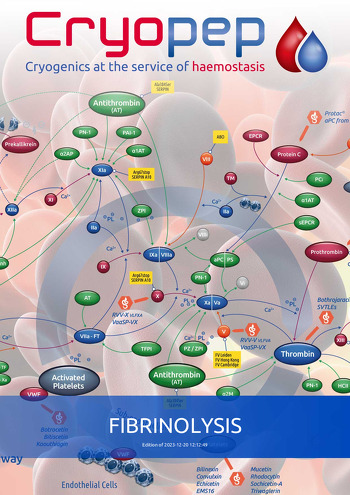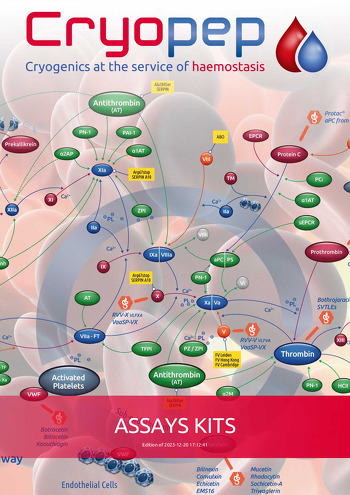Plasminogen activator inhibitor 1 (PAI-1) is a glycoprotein, the primary inhibitor of t-PA and u-PA. It plays an essential role in controlling any excessive activation of fibrinolysis. It is present in plasma associated with vitronectin, in free form or associated with t-PA and in the alpha granules of platelets.
Fibrinolysis corresponds to the solubilization of the fibrinous thrombus by plasmin, an enzyme originating from plasminogen adsorbed to fibrin. Plasminogen is activated by t-PA and u-Pa. PAI-1 by inhibiting plasminogen activators, it controls the degradation of fibrinous thrombus. A decrease in fibrinolytic activity promotes the occurrence of thrombosis, while excessive fibrinolysis leads to hemorrhages.
The test detects latent (inactive) and active forms of PAI-1 complexes and remains insensitive to PAI-2.
- 96 microwells coated with anti-human PAI-1 IgG
- 2 vials x biotinylated human anti-PAI-1 antibody, lyophilized
- 1 vial x substrate, TMB, 11 mL
- 1 bottle x detergent, 25% Triton X-100, 12 mL
- 2 sachets x PBS buffer, pH 7.4
- 1 vial x streptavidin-HRP, 60 μL
- 1 vial x lyophilized enzyme conjugate diluent
- 6 PAI-1 standard vials, lyophilized






















